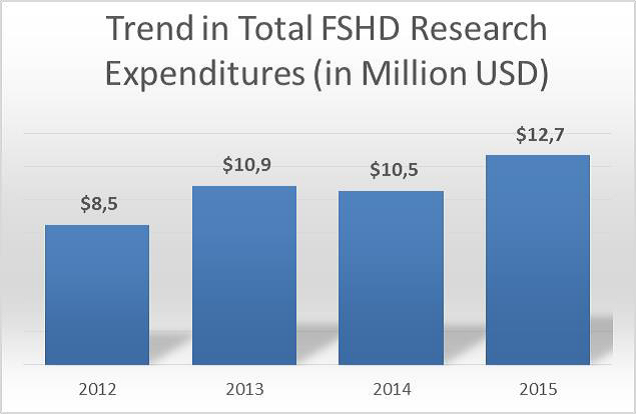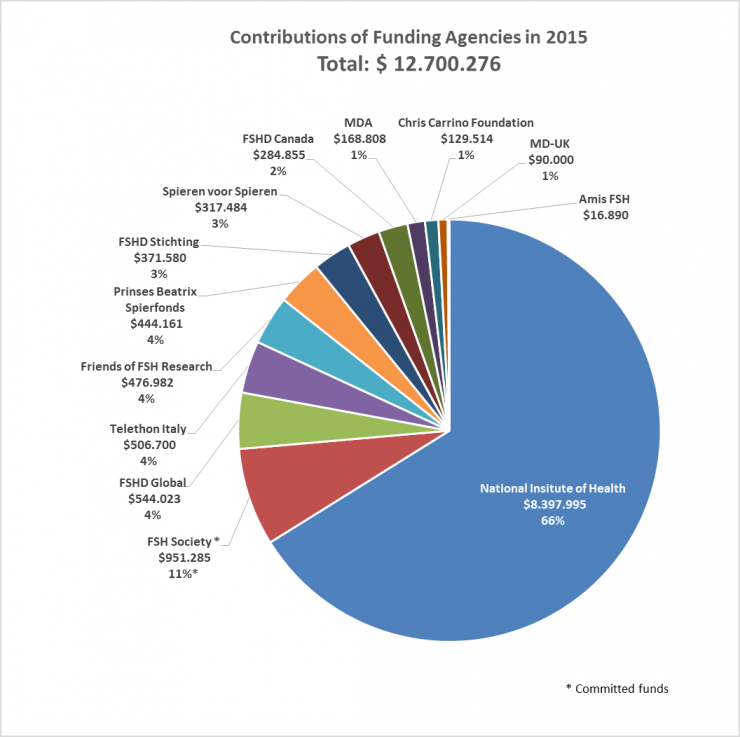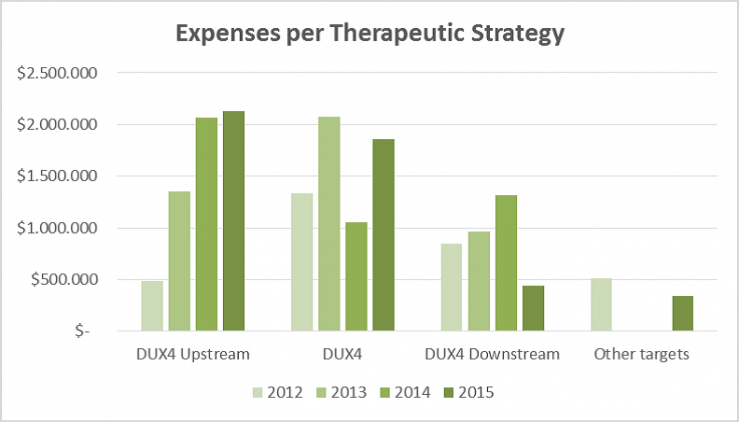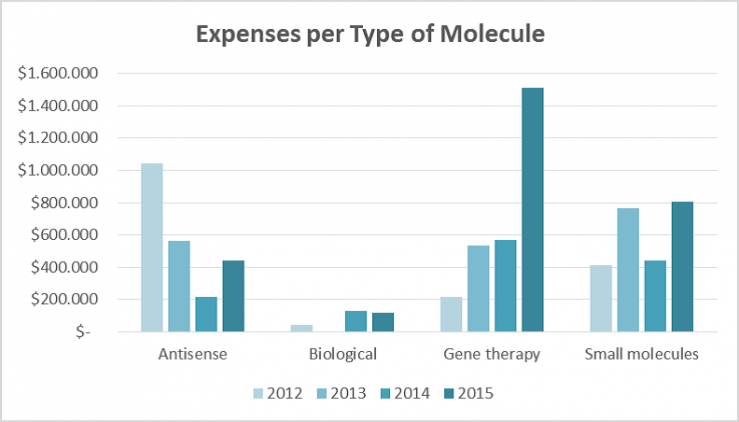Posted by George Shaw on Nov 7, 2016
Reprinted with permission.
This report provides an overview of the worldwide funding of research in the field of Facioscapulohumeral Muscular Dystrophy (FSHD) in 2015 and previous years.
November 2016
Wouter Suurmond
Corporate development Manager
Facio Therapies BV
Important information
This overview depends on data from different sources using different formats, including public information and data directly reported by funding agencies. Therefore - although compiled with greatest care and effort - Facio Therapies BV cannot control or guarantee the completeness and accuracy of this data. The trends shown in this report are based on short project descriptions or titles of grants, therefore these trends are subject to interpretation and might not completely cover all expenses in each specific area of research. This overview will thus at best serve to be an estimation of total amounts and trends in FSHD funding. Omissions are deeply regretted.
Please also bear in mind that the expenses to FSHD research can sometimes be a complex combination of grant commitment and expenditures over several years. Such data collection remains prone to include some errors, missing grants or double calculations. Collecting data in a consistent manner, for example by using the format in the distributed spreadsheet, could help towards improving the accuracy of the overviews.
1. Introduction
This overview serves to estimate the total expenses for FSHD research in 2015. In addition, trends in FSHD research funding are identified where possible. We hope this report serves as a valuable insight in the developments in this important research area. As for the previous reports, the goal is to evaluate the actual paid expenses for FSHD research.
We would like to thank all agencies for their transparency in sharing their FSHD research expenditures, and we would like to especially thank the organizations that used the reporting format that has been distributed.
2. Total FSHD research expenditures in 2015

The total estimated research expenditures sum up to over 12,7 million USD. This is more than previous years, see figure 1. Many funding agencies from all over the world have contributed to this grand total. Their individual contributions are shown in figure 2. The largest funder is the NIH with a contribution of 66% of the total amount of expenses towards FSHD research.

3. Trends in FSHD research funding
3.1 Expenses per stage of research
The expenses per stage of research in 2015 and previous years are shown in figure 3. Most of the expenses are directed towards Fundamental Research & Potential Therapies, this amount is similar to the previous year. A smaller but significant part of expenses is for preparation towards clinical trials, which includes clinical trial preparedness, biomarkers and outcome measures. In 2015 this subject seems to have received more funding than the previous year. Expenses towards animal models for FSHD seem to have increased in 2015 compared to the years before. Funding expenses for actual clinical trials make up a small portion of the total.

3.2 Expenses per therapeutic strategy
The expenses per therapeutic strategy are shown in figure 4. Where possible, distinctions were made between upstream pathways of DUX4, downstream pathways of DUX4, direct targeting of DUX4, or other targets. Expenses towards upstream pathways of DUX4 are highest, and this amount is similar to the previous year. Expenses towards directly targeting DUX4 seem to have increased. Expenses towards downstream pathways of DUX4 seem to have decreased. Small expenses towards research on other targets (FAT1 & ANT1) were identified in 2015.

3.3 Expenses per type of therapeutic molecule
Different types of therapeutic molecules exist. Where possible, a distinction was made between expenses towards research on: antisense based therapeutics, biologicals, gene therapy approaches, and small molecules. As shown in figure 5, expenses towards gene therapy were highest, and are increased compared to previous years. Expenses towards antisense based therapeutics seem to have increased compared to the previous year. Expenses towards biologicals remain low and similar to the previous year. Expenses towards small molecule based approaches seem to have increased.

4. Remarks
Committed funds or actual expenses
Committed funds can differ from the actual expenses in a certain calendar year. These overviews serve to estimate the closest representation of the actual expenses towards FSHD research in each calendar year, which is the reason that reporting of actual paid expenses is preferred over reporting of committed funds.
Currency conversions
Where necessary, currency conversion were performed using exchange rates of September 8th 2016:
- 1,00 EUR = 1,126 USD
- 1,00 AUD = 0,771 USD





Connect with us on social media